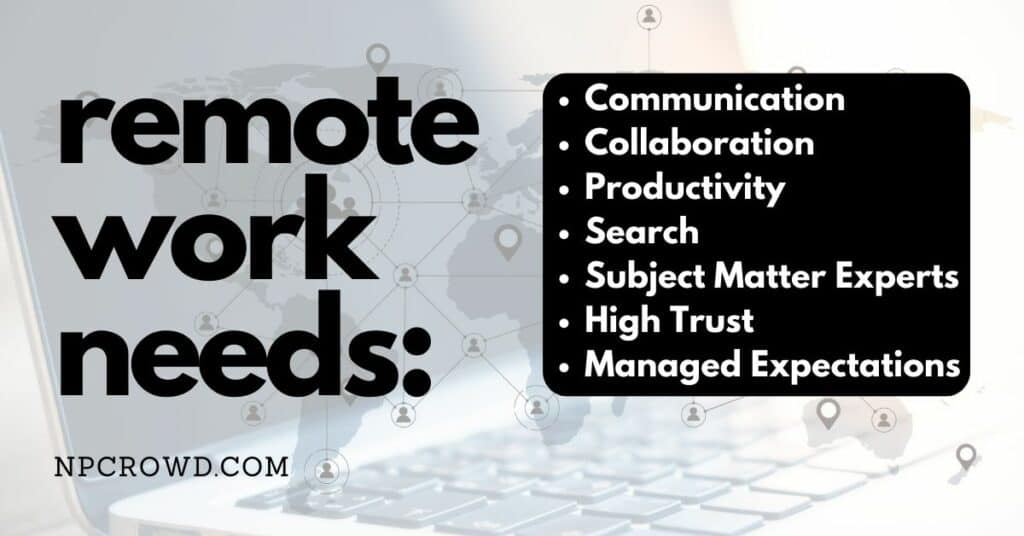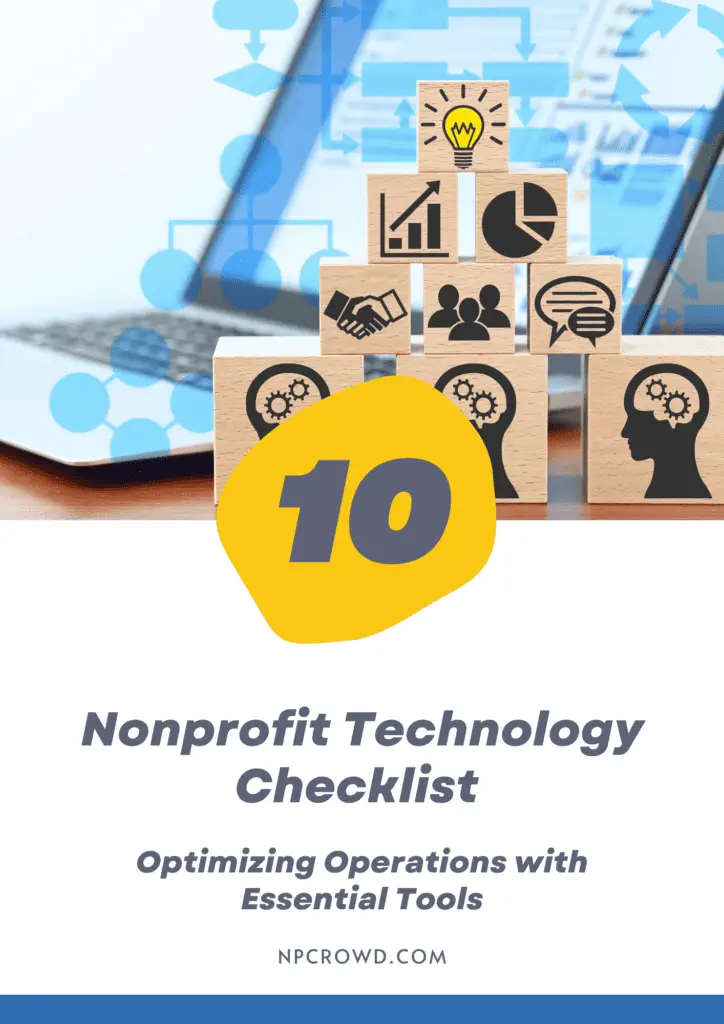Email Should Die: The New Frontier Of Collaboration
Disclaimer: This post may contain affiliate links. These links, if used and purchases made, we may earn a small commission. These affiliate programs do not impact the recommendations we make or the resources we refer you to. Our focus is on providing you the best resources for your nonprofit journey.
Email should die!That’s the message coming from a lot of people in the technology world. They believe that email is no longer necessary for communication, and it’s time to give up the obsolete practice of emailing everyone.
In fact, email should die as the primary way to communicate with customers and partners. Instead, use Slack, MS Teams, or other tools to keep things productive, efficient, effective, dare I say, collaborative.
So what’s the solution?
Email Should Die
Why should email die? It comes down to the fact that email has become a detriment to collaboration, human wellness, and ills productivity. It’s archaic, a relic of the past. And it’s time to move on.
According to one study, e-mail talk can both cause and make worse the problem of having too much e-mail, by showing us three things that create e-mail overload — unstable requests, pressures to respond, and the delegation of tasks and shifting interactants.
Email has been shown to be inefficient and time-consuming, and it can often be difficult to collaborate effectively with others.
This lack of efficiency can often lead to problems in businesses and organizations in every sector. Email can also be a burden for users, who may find it difficult to stay up-to-date on important messages, let alone find the information most needed by them.
Email is an important communication tool for work, social life, and business. It feels like we have to use it.
But, even when we know it is ok to not answer emails, like when we are on vacation, we still feel that other people we have relationships with need something from us. This makes us feel like we have to check email and respond. It’s a vicious cycle.
In A World Without Email, Cal Newport describes email conversations as a ping-pong match. Each reply is hitting the ball into the other person’s court. A response is required to not lose the game and thus the volley of email responses, ball, paddle, reply, continues much longer than it needs.
Now your inbox is an infinite number of ping pong tables each with a match going on. How well can you actually play multiple matches at the same time? This is what it’s like every time you check your email inbox.
Stop the merry-go-round!
Reimaging Collaboration
Email has been the primary form of communication in the business world for decades. It’s a simple, easy way to send a message and get a response back quickly. But email is also a major time suck. We spend hours every day reading and responding to messages, many of which could be handled just as easily with a quick phone call or chat.
There’s a new generation of remote collaboration tools that are changing the way we work together. These tools are designed to help us communicate and collaborate more effectively, without all the wasted time that comes with email.
Synchronous vs. Asynchronous Communications

One of the biggest advantages of these new remote collaboration tools is that they offer both synchronous and asynchronous communications.
Email is asynchronous, meaning that you can send a message and not expect an immediate response.
Synchronous tools, on the other hand, are designed to be used in real-time and require that both parties are available at the same time.
The best remote collaboration tools offer both options, so you can choose how to communicate with your team based on your needs.
The Solution: Collaboration Hubs and Processes
In the age of email, collaboration has become an essential part of work life. From corporate headquarters to individual departments, remote work is becoming more and more popular as a way to achieve productivity and efficiency. However, there are some challenges that need to be taken into account when implementing remote work:
1. The use of remote working can actually lead to a decrease in team morale. In many cases, employees feel left out and isolated when their work is conducted remotely. This can lead to tension and conflict within the team, which could make it difficult for them to collaborate effectively.
2. The distance between employees can also require them to take on additional tasks outside of their regular job responsibilities. This can add unnecessary stress and delay the completion of important tasks.
3. Some employees may not be comfortable working from home or using technology for their work (due to its limitations). This could lead to a decline in team morale or an overall loss of productivity due to reduced interaction between coworkers.
LEARN MORE: Before subscribing or buying remote collaboration or hub tools, check our massive list of nonprofit software discounts to make every dollar count.
How Do Collaboration Hubs Help
A collaboration hub is a type of online community in which individuals can share ideas, collaborate on projects, and connect with one another. Collaboration hubs can be helpful for a number of reasons:
- They can help to reduce costs associated with traditional forms of communication
- They can help to improve productivity
- They can help to create a more cohesive workforce.
Cost-Effective Communication Methods

Collaboration has been shown to be cost-effective when used correctly.
For example, email is often used to communicate between co-workers rather than between employees and managers. This type of communication can lead to frustration and burnout because it’s often difficult to engage in meaningful conversations over email.
By using collaboration hubs instead, departments or teams can easily connect with one another and share ideas without having to worry about the tone or context of their messages. Additionally, by using collaborative tools such as Google Docs or PowerPoint, employees can easily access and share information while on the go.
This type of communication also allows for a more social atmosphere within departments or teams as people are able to spread their wings and try new things without fear of being judged or left out.
Collaboration hubs also tend to be less expensive than traditional forms of communication so they may be better value for your money.
Improved productivity
One of the most important benefits that come from using collaboration hubs is improved productivity.
Employees who are able to collaborate effectively are able to produce greater levels of output than those who do not use collaboration hubs. In some cases, research has shown that working in groups generally leads to increased creativity and innovation due to the sense of teamwork that occurs during these types of interactions.
By sharing ideas and working together towards a common goal, employees are more likely able to solve problems quickly and effectively – which is essential for businesses looking for quick fixes or efficiency measures.
Finally, by collaborating regularly throughout the day, employees learn how best to work together as a team and develop better relationships with one another (which is important for long-term career growth).
Cost-effectiveness
Collaboration hubs have also been proven cost-effective when it comes to financial matters.
For example, by utilizing social media platforms like Facebook or Twitter as well as search engines like Google, businesses may find it easier to identify potential collaborators through these channels rather than having to spend time searching through many different websites/blogs/forums etc…..
Overall, these factors all suggest that collaborative hubs could prove very beneficial for businesses seeking quick solutions or efficiency measures while also developing long-term career growth potential.
How Do Processes Help Collaboration And The Death Of Email
In a world filled with technology, it’s no surprise that people are finding new ways to work together. One of the latest trends is collaborative work, which is made possible by collaboration hubs. These hubs allow people to work together on projects remotely, using tools such as video conferencing and document sharing.
Collaboration hubs are beneficial for a number of reasons.
First, they allow people to work together on projects without having to be in the same place. This can be a huge advantage for companies with employees who work remotely or in different locations.
Second, collaboration hubs provide a central location for all project-related information. This makes it easy for team members to stay up-to-date on the latest developments and avoid duplication of effort.
Finally, collaboration hubs can help reduce email usage.
Remote work: the future of work?

In recent years, there has been a growing trend of employees working remotely. A remote work set-up allows workers more flexibility and freedom when it comes to their hours and location. For employers, remote work can be a cost-saving measure. According to a study by Global Workplace Analytics, 25-30% of the workforce will be working remotely by 2030.
There are many advantages to remote work. Employees can take breaks whenever they want and don’t have to commute. They can also create their own schedule that fits their lifestyle. Remote work also allows people to live in places with a lower cost of living.
However, there are some challenges that come with remote work. One is isolation from colleagues. Working remotely can feel lonely and it can be difficult to build relationships with co-workers. Another challenge is distractions at home.
But, leaving the world of email behind and embracing collaboration hubs is a great way to tackle both the challenges and reap the benefits of remote work.
Conclusion
Email should die to the rise of collaboration hubs for all sectors of the economy. Collaboration hubs are quickly becoming the future of work, and email is struggling to keep up. By using collaboration hubs in place of email, businesses can save time and boost productivity. With better communication tools at our fingertips, we can move closer to the dream of a more collaborative world.







